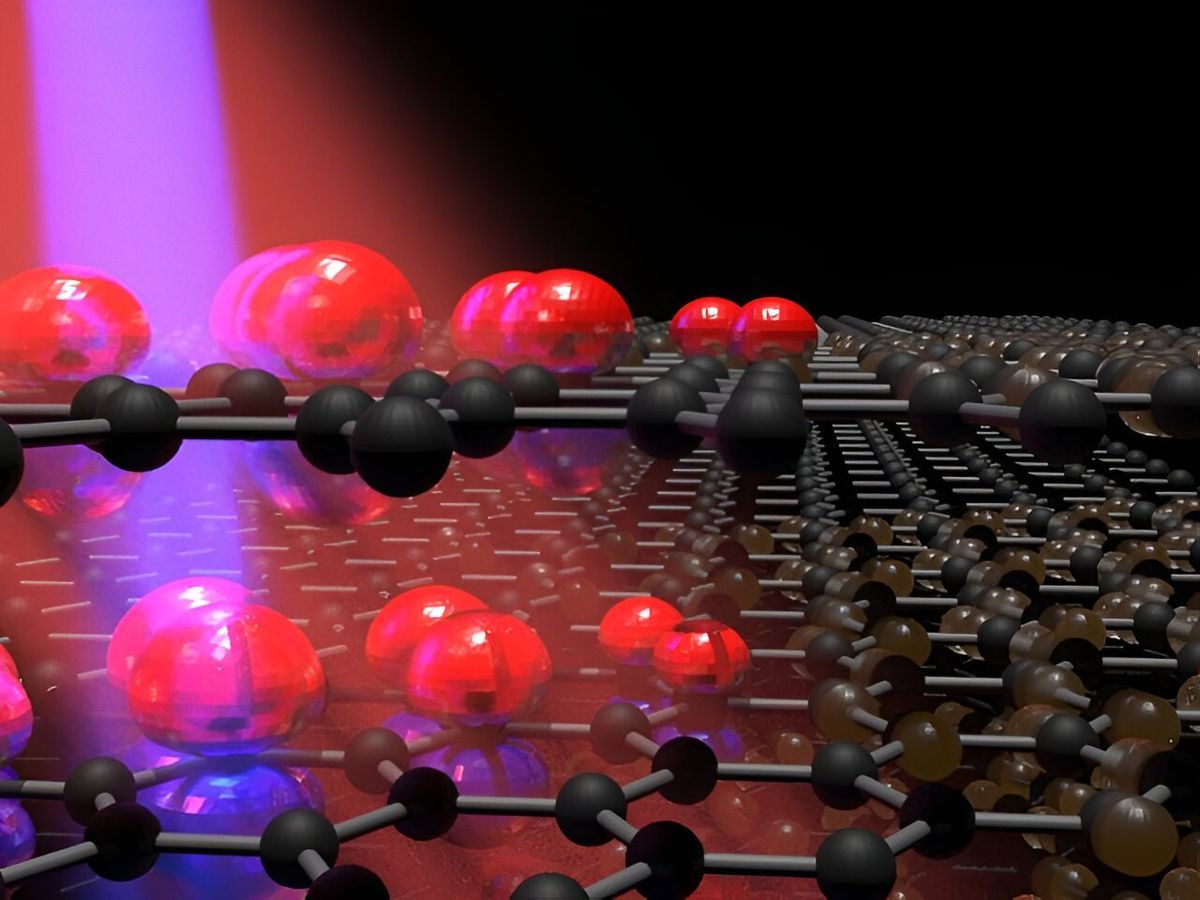In a scientific breakthrough that could reshape our understanding of how light interacts with matter, researchers from the Attoscience and Ultrafast Optics group at the Institute of Photonic Sciences (ICFO) in Barcelona have discovered a new phase of matter, aptly named a “light-matter hybrid.” The findings, published inNature Communications, not only reveal a previously unseen state of material but also open doors to potential applications in photovoltaics, high-power electronics, and beyond. In the hybrid, the material’s properties are altered according to the strength of pulses of light, in one case dropping resistance to near zero.
At the heart of this technique is attosecond X-ray absorption spectroscopy, which allowed the ICFO research team to study how electrons behave on timescales as short as a billionth of a billionth of a second (an attosecond) when exposed to powerful infrared radiation. This was achieved through a classic pump-probe technique, where an infrared laser pulse excites electrons into high-energy states, and an X-ray beam subsequently probes the energy distribution of the excited electrons after a controlled time delay.
“We measure the speed at which electrons relax from a high-energy state,” says Jens Biegert, a physicist and professor at ICFO, who led the research team. By probing with various times after the excitation, they can get a complete look at how and when the electrons fall back to their ground states.
“The strength of the light makes the difference as it modifies the material’s properties via the electrons.”
—Jens Biegert, ICFO, Barcelona
The primary material used in the study was graphite, which was chosen for its complex properties. But Biegert says that the measurement technique employed is universal, extending its application to a wide array of materials. The only requirement is the presence of an atom with an X-ray absorption line covered by the X-ray probe’s spectrum, making elements like silicon viable candidates for exploration.
The study revealed that by varying the intensity of infrared light, the electrons’ properties correlated with the power of the radiation. This deviation in behavior signaled the material entering a distinct phase, termed the “light-matter hybrid.”
“The strength of the light makes the difference as it modifies the material’s properties via the electrons,” explained Biegert.
In this state, electrons exhibited resistance orders of magnitude lower than in their original state, resembling superconducting behavior. While this work will not enable the harnessing of superconductivity, it may help to better understand the mechanisms at work in it.
How long this light-matter hybrid state remains sustainable is an open question. But Beigert contends there is evidence to support the idea that a carefully timed sequence of pulses can extend the timescale significantly.
Of course, the brevity of the novel state may be its greatest appeal. The technique could open avenues for advancements in photonic integrated circuits or optical computing.
“One could envision using this fast change as a switch for computing,” suggested Biegert. “Or imagine an electronic component in which not only the electrons are the active components but the materials change as well. This would make it possible to have an electronic component which serves different functions at the same time.”
Biegert believes the research also has relevance to the field of photovoltaics, where understanding the exact interaction inside materials is essential for enhancing conversion efficiency. “One issue with photovoltaics is that we do not really understand or control the exact interaction inside materials,” he says. “For instance, to make an organic solar cell more efficient, we do not really know which knobs to turn.”
For instance, the absorption of photons in a solid results in an energy transfer from the light field to the atoms that occurs over an attosecond to picoseconds or even longer. With this technique, it is now possible to trace the redistribution of the energy after optically exciting a material.
- What’s a Time Crystal? ›
- Photonics Meets Plasmonics in New Switch That Could Steer Lidar Laser Beams ›
Dexter Johnson is a contributing editor at IEEE Spectrum, with a focus on nanotechnology.



